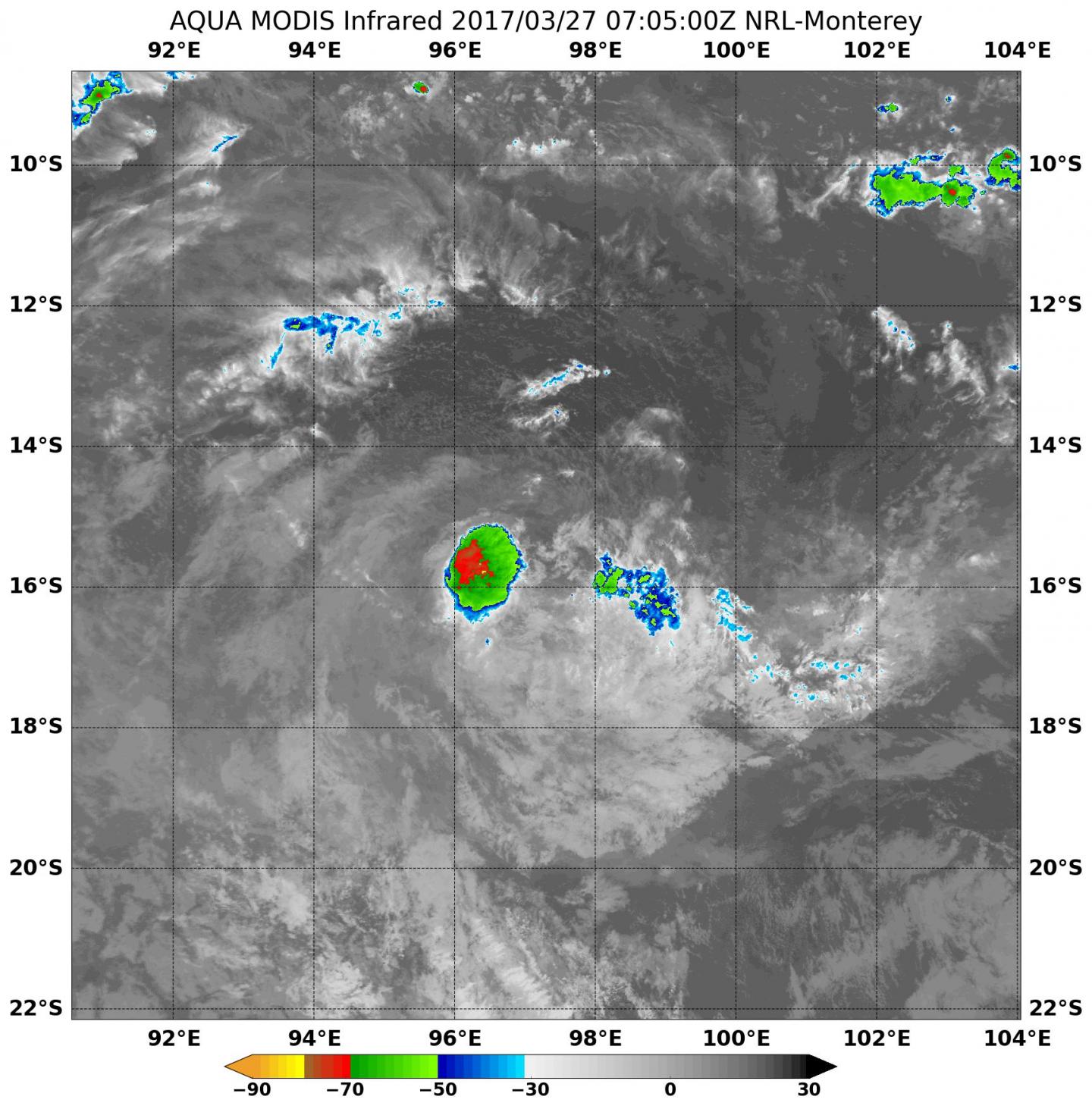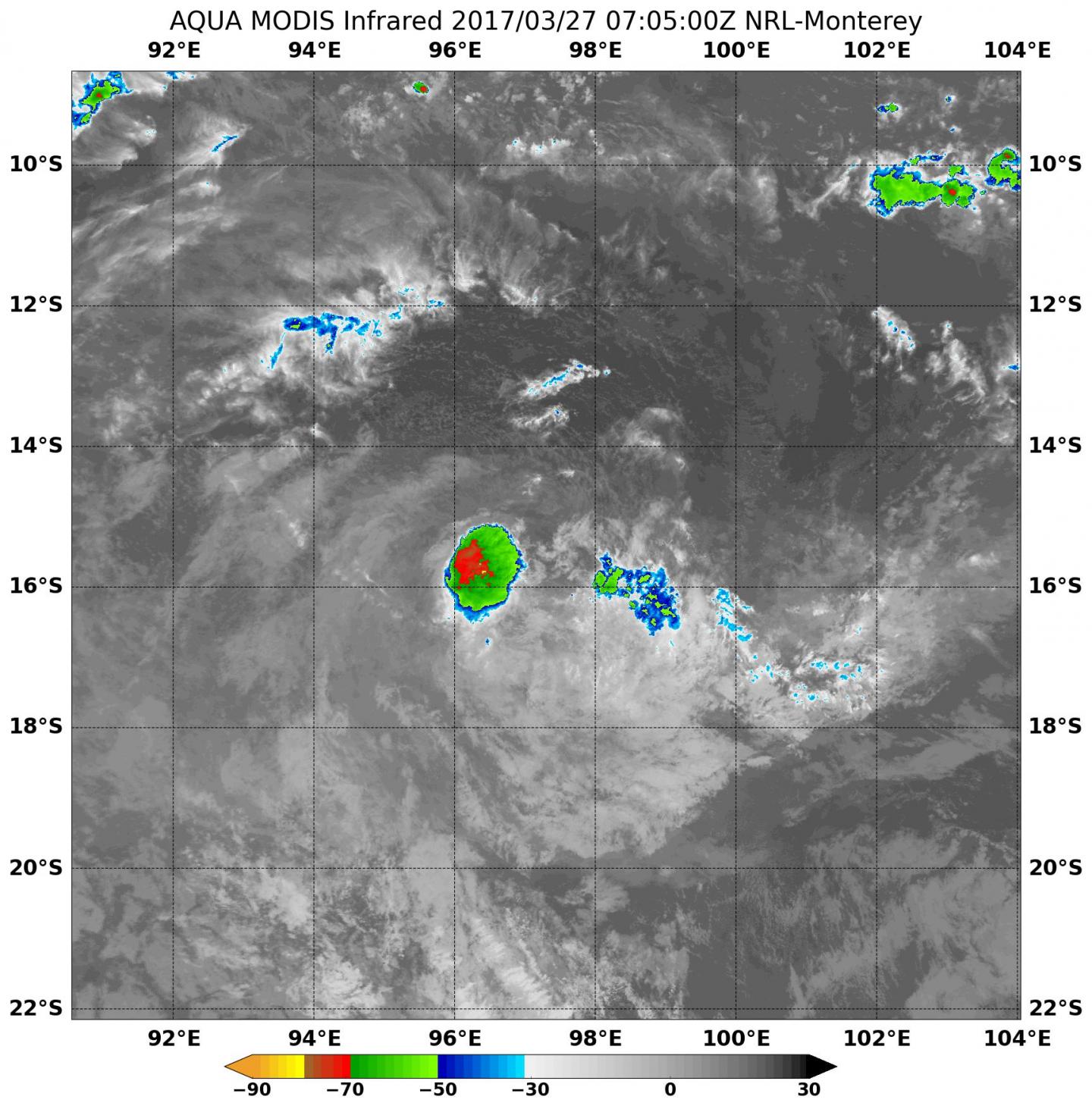
Credit: Credit: NASA / NRL
Tropical Cyclone Caleb is weakening in the Southern Indian Ocean and NASA's Aqua satellite caught one of the last bursts of strength as it passed overhead.
On Mar. 27 at 0705 UTC (3:05 a.m. EST) the MODIS instrument aboard NASA's Aqua satellite analyzed Caleb in infrared light. The infrared data measured cloud top temperatures and revealed a small area of strong thunderstorms that remained in the small storm at that time. Those storms, located in Caleb's northwestern quadrant, had cloud top temperatures as cold as near minus 56.6 degrees Celsius or minus 70 degrees Fahrenheit. Hours later, however, by 0900 UTC (5 a.m. EST), those strong storms had weakened and the system was devoid of any persistent convection (rising air that forms the thunderstorms that make up a tropical cyclone).
At 0900 UTC (5 a.m. EST) on March 27, 2017 the Joint Typhoon Warning Center issued their final warning on Caleb. At that time Caleb's maximum sustained winds dropped to 35 knots (40 mph/62 mph). Caleb was located near 15.4 degrees south latitude and 97.16 degrees east longitude. That's about 200 nautical miles (230 miles/370 km) south of Cocos Island. Caleb was moving to the west at 6 knots (6.9 mph/11.1 kph).
The Joint Typhoon Warning Center expects Caleb to dissipate late today, March 27, 2017.
###
Media Contact
Rob Gutro
[email protected]
@NASAGoddard
http://www.nasa.gov/goddard
############
Story Source: Materials provided by Scienmag





